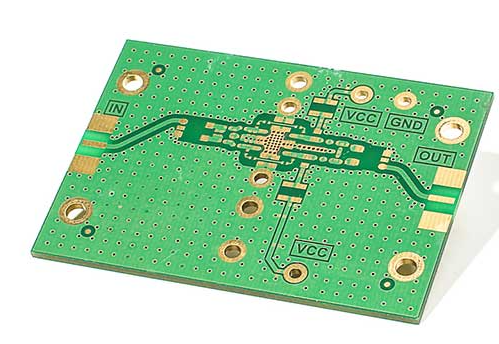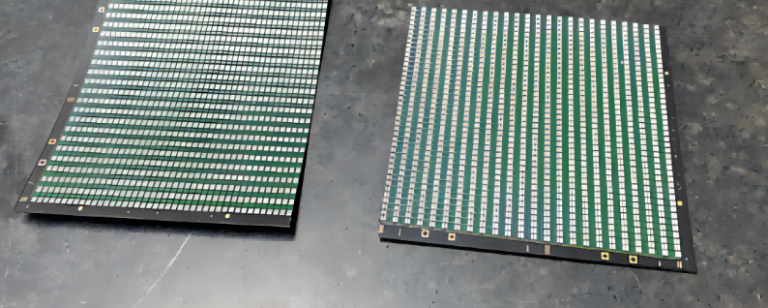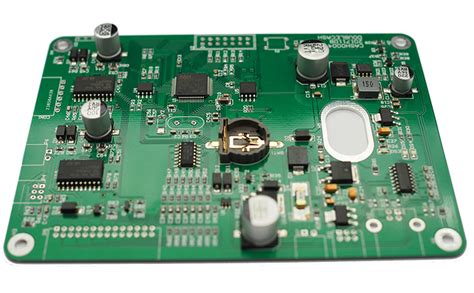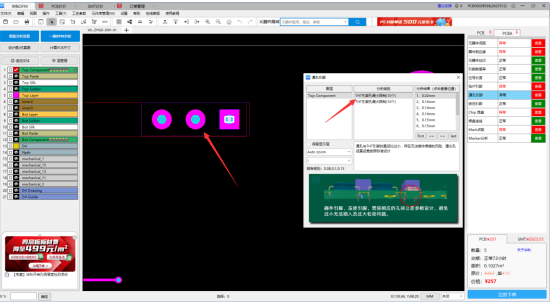Mycronic pcb assembly
Innovations In Mycronic PCB Assembly Technology
In the rapidly evolving landscape of electronics manufacturing, Mycronic has emerged as a leader in printed circuit board (PCB) assembly technology, consistently pushing the boundaries of innovation. As the demand for more complex and miniaturized electronic devices grows, Mycronic’s advancements in PCB assembly have become increasingly crucial. These innovations not only enhance the efficiency and precision of the assembly process but also address the challenges posed by modern electronic designs.
One of the most significant innovations in Mycronic PCB assembly technology is the development of advanced surface mount technology (SMT) equipment.
SMT has revolutionized the way electronic components are mounted onto PCBs, allowing for greater component density and improved performance. Mycronic’s SMT solutions are designed to handle a wide range of components, from the smallest chip components to large, complex packages. This versatility is achieved through the use of sophisticated vision systems and precision placement mechanisms, which ensure that each component is accurately positioned on the board.
Moreover, Mycronic has introduced cutting-edge solder paste printing technology, which is a critical step in the PCB assembly process.
The company’s solder paste printers are equipped with high-resolution cameras and advanced software algorithms that enable precise alignment and deposition of solder paste. This precision is essential for ensuring reliable solder joints, particularly as component sizes continue to shrink. By minimizing defects and improving yield rates, Mycronic’s solder paste printing technology contributes significantly to the overall efficiency of the assembly process.
In addition to hardware innovations, Mycronic has made significant strides in software development, which plays a pivotal role in modern PCB assembly.
The company’s software solutions are designed to optimize the entire production process, from design to final assembly. By integrating data from various stages of production, Mycronic’s software provides real-time insights and analytics, enabling manufacturers to make informed decisions and quickly adapt to changing production requirements. This level of integration and automation not only reduces production time but also enhances the quality and reliability of the final product.
Furthermore, Mycronic’s commitment to sustainability is evident in its approach to PCB assembly technology.
The company has developed energy-efficient equipment and processes that minimize waste and reduce the environmental impact of electronics manufacturing. By focusing on sustainable practices, Mycronic not only meets the growing demand for environmentally friendly manufacturing solutions but also sets a benchmark for the industry.
Another noteworthy innovation is Mycronic’s approach to flexible manufacturing.
In an era where customization and rapid prototyping are increasingly important, Mycronic’s flexible manufacturing solutions allow for quick changeovers and adaptability to different production runs. This flexibility is particularly beneficial for manufacturers who need to respond swiftly to market demands and produce small batches of customized products without compromising on quality or efficiency.
In conclusion, Mycronic’s innovations in PCB assembly technology are shaping the future of electronics manufacturing. Through advancements in SMT equipment, solder paste printing, software integration, sustainability, and flexible manufacturing, Mycronic is addressing the challenges of modern electronic designs while setting new standards for efficiency and precision. As the industry continues to evolve, Mycronic’s commitment to innovation ensures that it remains at the forefront of PCB assembly technology, providing manufacturers with the tools they need to succeed in a competitive market.
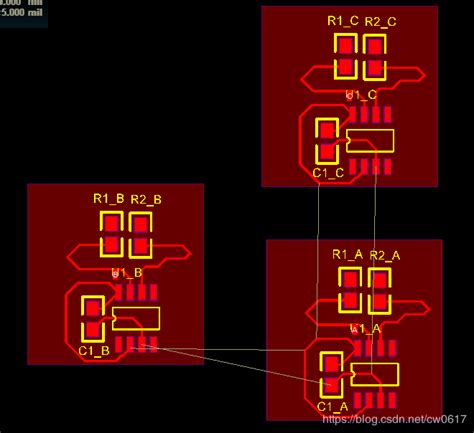
Benefits Of Using Mycronic Systems For PCB Manufacturing
In the ever-evolving landscape of electronics manufacturing, the demand for precision, efficiency, and adaptability has never been greater. Mycronic systems have emerged as a pivotal solution in the realm of printed circuit board (PCB) assembly, offering a multitude of benefits that cater to the intricate needs of modern manufacturing processes. As the industry continues to advance, understanding the advantages of utilizing Mycronic systems becomes essential for manufacturers aiming to maintain a competitive edge.
One of the foremost benefits of Mycronic systems in PCB manufacturing is their unparalleled precision.
These systems are designed to handle the intricate and delicate components that are characteristic of modern electronic devices. With the ability to place components with exceptional accuracy, Mycronic systems ensure that each PCB is assembled to the highest standards. This precision not only enhances the performance of the final product but also reduces the likelihood of errors that could lead to costly rework or product failures. Consequently, manufacturers can achieve higher yields and improved product reliability, which are critical factors in maintaining customer satisfaction and trust.
In addition to precision, Mycronic systems offer remarkable flexibility, a feature that is increasingly important in today’s fast-paced market.
The ability to quickly adapt to different production requirements is a significant advantage, as it allows manufacturers to respond swiftly to changes in demand or design specifications. Mycronic systems are equipped with advanced software that facilitates rapid reconfiguration, enabling seamless transitions between different product lines or batch sizes. This adaptability not only enhances production efficiency but also reduces downtime, thereby optimizing the overall manufacturing process.
Moreover, Mycronic systems are renowned for their scalability, which is a crucial consideration for manufacturers looking to expand their operations.
As businesses grow, the need for scalable solutions becomes apparent, and Mycronic systems provide the capability to scale production without compromising on quality or efficiency. This scalability is achieved through modular designs that allow manufacturers to incrementally increase their production capacity, ensuring that they can meet rising demands without the need for significant overhauls or investments in entirely new systems.
Another significant benefit of using Mycronic systems is their contribution to cost-effectiveness.
By minimizing errors and maximizing efficiency, these systems help reduce waste and lower production costs. The precision and reliability of Mycronic systems mean that fewer resources are spent on correcting mistakes or dealing with defective products. Additionally, the flexibility and scalability of these systems allow manufacturers to optimize their production processes, further contributing to cost savings. In a competitive market, the ability to produce high-quality products at a lower cost is a substantial advantage that can enhance a company’s profitability and market position.
Furthermore, Mycronic systems are designed with sustainability in mind, aligning with the growing emphasis on environmentally responsible manufacturing practices.
By reducing waste and improving resource efficiency, these systems support manufacturers in their efforts to minimize their environmental footprint. This commitment to sustainability not only benefits the planet but also resonates with consumers who are increasingly prioritizing eco-friendly products and practices.
In conclusion, the benefits of using Mycronic systems for PCB manufacturing are manifold, encompassing precision, flexibility, scalability, cost-effectiveness, and sustainability. As the electronics industry continues to evolve, these advantages position Mycronic systems as an indispensable tool for manufacturers seeking to thrive in a competitive and dynamic market. By leveraging the capabilities of Mycronic systems, manufacturers can ensure that they remain at the forefront of innovation, delivering high-quality products that meet the ever-changing demands of consumers and the industry alike.

Mycronic’s Role In The Future Of PCB Assembly
Mycronic, a leading innovator in the field of electronics manufacturing, is poised to play a pivotal role in the future of printed circuit board (PCB) assembly. As the demand for more sophisticated electronic devices continues to grow, the need for efficient, precise, and flexible PCB assembly solutions becomes increasingly critical. Mycronic’s advanced technologies and strategic approach position the company as a key player in shaping the future of this essential industry.
One of the primary ways Mycronic is influencing the future of PCB assembly is through its commitment to automation and smart manufacturing.
The company’s cutting-edge equipment, such as its pick-and-place machines and solder paste printers, are designed to enhance productivity while maintaining high levels of accuracy. By integrating automation into the assembly process, Mycronic enables manufacturers to reduce human error, increase throughput, and achieve consistent quality. This is particularly important as electronic devices become more complex and miniaturized, requiring precise placement of components on increasingly dense PCBs.
Moreover, Mycronic’s focus on flexibility and adaptability is crucial in an industry characterized by rapid technological advancements and shifting consumer demands.
The company’s modular solutions allow manufacturers to easily scale their operations and adapt to new production requirements. This flexibility is essential for staying competitive in a market where product lifecycles are shortening, and the ability to quickly respond to changes can be a significant advantage. Mycronic’s equipment is designed to handle a wide range of PCB sizes and types, making it suitable for various applications, from consumer electronics to automotive and industrial sectors.
In addition to automation and flexibility, Mycronic is also at the forefront of implementing Industry 4.0 principles in PCB assembly.
By leveraging data analytics, machine learning, and the Internet of Things (IoT), Mycronic is helping manufacturers optimize their production processes and make informed decisions. The company’s solutions enable real-time monitoring and analysis of production data, allowing for predictive maintenance, improved resource allocation, and enhanced overall efficiency. This data-driven approach not only reduces downtime and operational costs but also supports sustainable manufacturing practices by minimizing waste and energy consumption.
Furthermore, Mycronic’s commitment to innovation extends beyond its products to include strategic partnerships and collaborations.
By working closely with other industry leaders, research institutions, and customers, Mycronic is able to stay at the cutting edge of technological developments and anticipate future trends. These collaborations facilitate the exchange of knowledge and expertise, driving the development of new solutions that address emerging challenges in PCB assembly.
As the electronics industry continues to evolve, Mycronic’s role in the future of PCB assembly is likely to expand. The company’s dedication to advancing technology, enhancing efficiency, and fostering collaboration positions it as a leader in the field. By providing manufacturers with the tools and insights needed to navigate an increasingly complex landscape, Mycronic is not only shaping the future of PCB assembly but also contributing to the broader advancement of the electronics industry. As such, Mycronic’s influence is expected to grow, driving innovation and setting new standards for quality and performance in PCB assembly.

Optimizing Production Efficiency With Mycronic PCB Solutions
In the ever-evolving landscape of electronics manufacturing, optimizing production efficiency remains a paramount concern for companies striving to maintain a competitive edge. Mycronic, a leader in the field of PCB assembly solutions, offers innovative technologies that significantly enhance production processes. By integrating advanced automation and precision engineering, Mycronic’s solutions address the critical need for speed, accuracy, and flexibility in PCB assembly.
One of the key aspects of Mycronic’s approach is the utilization of cutting-edge surface mount technology (SMT) equipment.
This technology is designed to handle a wide range of components with varying sizes and complexities, ensuring that manufacturers can meet diverse production demands. The adaptability of Mycronic’s SMT equipment allows for seamless transitions between different production runs, thereby minimizing downtime and maximizing throughput. This flexibility is particularly beneficial in today’s market, where product lifecycles are shorter and the demand for customization is higher than ever.
Moreover, Mycronic’s PCB assembly solutions are equipped with sophisticated software that enhances the overall efficiency of the production line.
The software provides real-time data analytics and monitoring, enabling manufacturers to make informed decisions quickly. By leveraging this data, companies can identify bottlenecks, predict maintenance needs, and optimize resource allocation. This proactive approach not only reduces operational costs but also improves product quality by minimizing errors and defects.
In addition to software advancements, Mycronic places a strong emphasis on precision engineering.
The company’s equipment is designed to achieve high levels of accuracy, which is crucial for the assembly of complex PCBs with tight tolerances. Precision in component placement and soldering ensures that the final product meets stringent quality standards, reducing the likelihood of rework and returns. This focus on precision is complemented by Mycronic’s commitment to continuous innovation, as the company invests heavily in research and development to stay at the forefront of technological advancements.
Furthermore, Mycronic’s solutions are designed with sustainability in mind.
The company recognizes the importance of reducing environmental impact and has implemented features that minimize waste and energy consumption. For instance, their equipment is engineered to optimize material usage, reducing excess and scrap. Additionally, energy-efficient designs help lower the carbon footprint of manufacturing operations, aligning with global efforts to promote sustainable practices in the industry.
The integration of Mycronic’s PCB assembly solutions into a manufacturing process not only enhances efficiency but also provides a competitive advantage.
By streamlining operations and improving product quality, companies can better meet customer expectations and respond swiftly to market changes. This agility is crucial in an industry characterized by rapid technological advancements and shifting consumer preferences.
In conclusion, Mycronic’s PCB assembly solutions offer a comprehensive approach to optimizing production efficiency. Through the combination of advanced SMT technology, sophisticated software, precision engineering, and sustainable practices, Mycronic empowers manufacturers to achieve higher levels of productivity and quality. As the electronics manufacturing industry continues to evolve, embracing such innovative solutions will be essential for companies aiming to thrive in a competitive global market.


